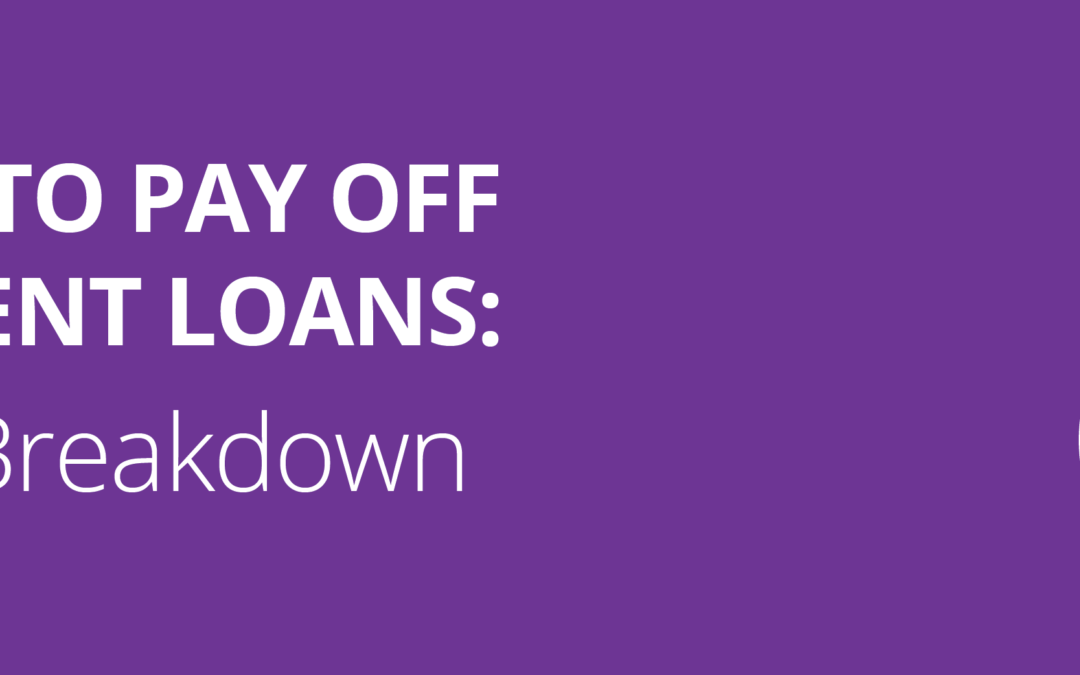This article by Stefanie O’Connell first appeared on stefanieoconnell.com in September 2015.
Seventy percent of college students are now graduating with student loan debt. If the ever-rising cost of higher education is any indication, that’s not going to change any time soon. For members of the class of 2015, graduates will have to pay off student loans averaging $35,051.
How are young, twenty somethings surviving on unpaid internships and crummy starter salaries supposed to shoulder five figures of interest, bearing debt, on top of a place to live and a steady supply of ramen noodles?
How to pay off student loans – The breakdown
When’s my payment due? And to whom? And when?
Step One: Figure out what you actually owe. What is your total student loan balance and what are the balances for each loan respectively? What are your interest rates on each loan? What are your minimum payments on each? When do you need to start making payments, how often and to whom?
Tip: You can use NSLDS to track your Federal student loans and your credit report is a good starting point for tracking down private lenders.
Do your research. Write down the numbers, build monthly payments into your budget and schedule them into your life.
Don’t mess up your credit score
Failing to pay off student loans or even missing a payment can do some serious damage to your credit. Payment history is the single biggest contributor to your credit score. If a lender reports your delinquent loan, it can lower your credit rating, making borrowing money for a home, car or even a credit card more difficult and more expensive in the future.
If you can’t afford to meet your payment obligations, be proactive – there are alternatives. Just don’t blow them off. Student loans cannot be discharged in bankruptcy, so those balances aren’t going anywhere unless you deal with them head on.
Budget bills and more. Find out what you can afford
If you haven’t already, build a budget so that you know whether you truly cannot afford to pay off student loans or whether the money you need to meet your payment obligations is unnecessarily tied up funding discretionary expenses like a beer of the month club or premium cable TV package.
Rather than trying to squeeze student loan payments into your monthly spending plan, consider an alternate approach where you build your budget around what you owe. Use the income leftover after meeting your monthly payment obligations to dictate what you can afford to spend on other recurring expenses – rent, transportation, etc.
How to pay off student loans – Choosing a repayment plan
Deferment, adjustment and payment plans
If, after all your due diligence calculating payments, building a budget and reducing expenses, you’re still coming up short on your monthly student loan minimums, consider the alternatives.
Student Loan Deferment: A deferment allows you to temporarily postpone making student loan payments, which can keep you from becoming delinquent on payments or defaulting. To see if you qualify for deferment, contact your servicer or lender. Situations in which you may be approved for deferment include unemployment, active duty military service, economic hardship and college or graduate school enrollment. Learn more about deferment here.
Adjustment and Payment Plans: Most student loan repayment plans operate on a standard 10-year timeline, but there are alternatives that may be better suited to your circumstances. For example, a graduated repayment plan uses the ten-year standard timeline to pay off student loans, but starts out with a lower monthly payment obligations that increases every two years. This alternative can serve those who anticipate significant income increases in their early working years. Another alternative is the extended repayment plan in which the window for payback can be stretched to 25 years, lowering the monthly bill. Note that these programs are only available for Federal loans and are subject to eligibility.
Negotiating interest
For relief on private student loan bills, call up your lenders and negotiate directly. Remember, it’s in their best interest to come up with a plan in which you can afford to pay off your full loan balance, otherwise they’re operating at a loss. Make a solid case for relief, negotiating a reduction of interest, an extended repayment timeline or both. You can also refinance your loans through platforms that use your credit score and income to offer you more competitive rates than you may be able to negotiate with your original lender.
Consolidation
If you’re making multiple monthly payments on multiple loans to multiple companies, consolidating your loans can simplify the repayment process with one monthly payment, often at a lower interest rate. Again, refinancing platforms are powerful tools for this kind of student loan consolidation.
Programs to pay what you can
Income-Based Repayment: Only available for Federal Student Loans, the Income-Based Repayment plan caps monthly student loan payments at 15 percent of discretionary income. The monthly minimum payment is adjusted each year based on your income. If you keep up with your payments, your remaining debt may be forgiven after 25 years. Find out whether you’re eligible and learn more about Income-Based Repayment here.
The Income-Sensitive Repayment Plan, Income-Driven Repayment Plan and Pay As You Earn Repayment Plan are three other Federal programs that can help you pay off student loans by keeping payments within the parameters of your means, provided you meet the eligibility requirements.
Stefanie O’Connell is a former broke actress turned personal finance expert. Stefanie channeled her energy into a zest for personal finance and soon found herself empowered by her finances and starting her own blog, StefanieOConnell.com, and a book, The Broke and Beautiful Life. You can contact her through her blog.


